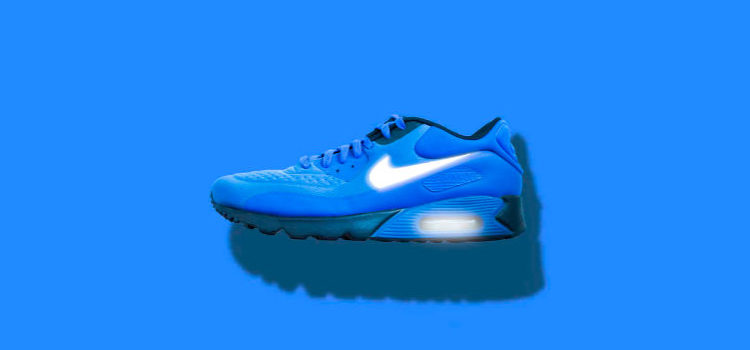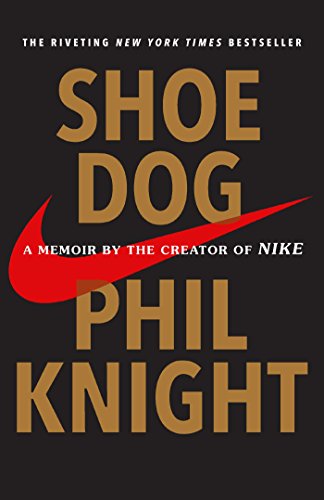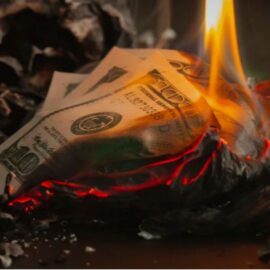

This article is an excerpt from the Shortform summary of "Shoe Dog" by Phil Knight. Shortform has the world's best summaries of books you should be reading.
Like this article? Sign up for a free trial here .
In Nike founder Phil Knight’s memoir Shoe Dog, Knight discusses a man who would be Nike’s mortal enemy—Shoji Kitami, an executive at Japanese company Onitsuka. Onitsuka is supposed to be Knight’s partner, but Kitami selfishly has other plans. He undermines Phil Knight and harasses him over years, eventually leading Knight to found Nike to get out of Kitami’s reach.
These are highlights about Onitsuka’s Kitami from Shoe Dog.
1966
One of Johnson’s customers says that he can start getting Tiger running shoes from another seller – a wrestling coach somewhere in the East Coast. That same wrestling coach from 1964 who was supposed to stick to wrestling shoes.
This simply can’t do. The wrestling coach is stepping on Blue Ribbon’s turf, capitalizing on all the hard work they’ve done building brand recognition for Onitsuka.
Phil flies to Japan immediately to meet with Onitsuka. (Financially, this is no small feat – he doesn’t have the money, so he puts the charge on his credit card.) He has a new contact – a slick looking man named Kitami. They settle into a large conference room with other executives.
Phil lays out his case. They’d been doubling their sales each year and projecting $84,000 in sales in 1967. He’d like to become Onitsuka’s exclusive US distributor for track and field. Kitami rebuffs him. They want someone bigger, more established, with nationwide offices. Phil counters that not only do they have a new retail shop in Los Angeles, they have offices on both coasts.
(Phil was lying – they didn’t have an East Coast office.)
After some deliberation, Onitsuka delivers good news – Blue Ribbon will be the exclusive distributor of Tiger track and field shoes in the United States. Onitsuka would send shoes immediately to Blue Ribbon’s East Coast office. Take that, wrestling coach.
1968
In Japan, Onitsuka’s Kitami (the slick executive from before) greets him warmly. Blue Ribbon’s sales doublings are impressive, and the East Coast office under Johnson gives Kitami confidence. Phil shares new shoe designs like the Boston, featuring a new midsole cushion. They meet often over several weeks, and Phil starts to get a brotherly vibe from Kitami.
Onitsuka’s Kitami invites Phil to his department’s annual picnic, where typically straight-laced businessmen loosen their ties and go a little nuts. They feast on ample food and have potato sack races. Where Japan once felt just a few years ago like a foreign land with unusual customs, Phil now feels at home.
1969
Once again, sales are poised to double for Blue Ribbon, at $300,000 this year. Phil feels it’s finally safe to pay himself a salary ($18,000 a year), and he quits Portland State to go full time at Blue Ribbon.
No momentous business events happen this year, though there are some rumblings of problems to come. Most importantly, Phil starts to doubt Kitami’s sincerity from recent wires and letters. Maybe Onitsuka’s getting ready to raise prices on Blue Ribbon. Maybe they’re making secret arrangements with new distributors again. Phil just senses there’s something off.
So he has a backup plan – an inside man at Onitsuka who can keep tabs on Kitami. In a memo to his company, Phil announces that he’s “hired a spy.” He stresses that this is completely accepted in Japanese business culture.
1970
The contract with Onitsuka to supply Blue Ribbon with shoes is ending soon. Phil flies to Japan and asks for a 5 year contract with Onitsuka – after all, most of the US success was due to Blue Ribbon, and a survey shows 70% of American runners own Tigers. But Onitsuka is adamant to keep the deal for only 3 years. Why are they so adamant about cutting the timeline short? Phil is suspicious.
Onitsuka keeps hampering Blue Ribbon with late shipments and the wrong shoes in each shipment. The Cortez is selling like crazy, but instead of shipping those, Onitsuka ships Bostons, in the wrong sizes. Onitsuka promises they’re working on improving factories and reliability, but it never really improves.
Phil decides that Onitsuka can’t really be that incompetent – instead what they’re doing is satisfying the Japanese customers first with a limited supply, then exporting what remains to the US.
All of a sudden he gets a call from a shoe distributor on the East Coast. Onitsuka has approached him about becoming its new US distributor.
Phil freezes. What’s going on? They’d signed a 3 year renewal just a few months earlier. Were they breaking the contract?
He contacts Fujimoto, his spy on the inside. Indeed, Kitami and Onitsuka are considering a break with Blue Ribbon. There isn’t a firm plan yet, but Kitami is scouting candidates.
Phil still holds hope – no firm plan means he still has a chance. He invites Onitsuka’s Kitami to the US to show him what Blue Ribbon is really about.
1971
A groundbreaking year for Phil Knight and Blue Ribbon.
Onitsuka’s Kitami visits in March, and Phil wants to wow him, make him fall in love with Oregon and Blue Ribbon. They drive him around the Pacific Northwest, feeding them salmon and wine.
But Kitami causes trouble. At First National Bank, he demands that they give Blue Ribbon more money, to everyone else’s chagrin. Then, at Blue Ribbon, he insults the company by saying doubling isn’t enough – sales should be tripling every year. He shoots down Phil’s Japanese trading company idea, fearing that these companies make investments only to research companies, learn their trade secrets, and compete directly with them.
While Kitami’s in the bathroom, Phil steals a folder from Kitami’s briefcase. Their suspicions are confirmed – it lists 18 athletic shoe distributors in the US, and appointments with half of them. Phil feels betrayed – they’d revolutionized Onitsuka, shown them how to make a better shoe, and now Onitsuka was planning to cut them out.
Kitami’s trip ends with dinner at Bowerman’s house. Penny, Phil’s wife, is driving Kitami. They get a flat tire on the road, and Kitami stays in the car and doesn’t help – Penny has to fix it herself.
As betrayed as Phil feels, he believes then that the best course is to keep the peace, to convince Kitami not to abandon Blue Ribbon. Without Onitsuka and their shoes, he wouldn’t know what to do.
Onitsuka’s Kitami leaves Portland to travel around the US, but doesn’t reveal his intentions. When he returns, he has a new solution – sell Onitsuka 51% of Blue Ribbon. It’s an ultimatum – accept the deal, or Onitsuka will set up new distributors. Phil is shocked, and tries to stall by saying he needs to talk with Bowerman.
In a moment of clarity, Phil realizes a few things:
- Onitsuka and Kitami cannot be trusted.
- Blue Ribbon and Onitsuka are definitely going to sever ties.
- But they need to stay together as long as it takes to develop other supply sources.
- Step 1: scare off other distributors Onitsuka is meeting with by sending threats to sue.
- Step 2: find a replacement for Onitsuka.
———End of Preview———

Like what you just read? Read the rest of the world's best summary of "Shoe Dog" at Shortform . Learn the book's critical concepts in 20 minutes or less .
Here's what you'll find in our full Shoe Dog summary :
- How Phil Knight started Nike when he was just 24 years old
- The lawsuit that almost ended Nike
- The ups and downs of Nike over 20 years of business






